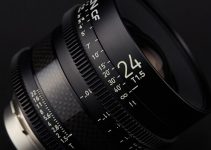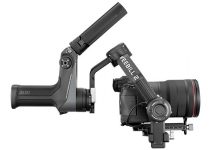Being the latest entry in the Red’s professional cinema camera lineup, the RED Raven 4.5K is unarguably the most affordable and lightest RED camera system to date. Actually, it’s a truly revolutionary piece of technology, especially for the price point offering 120fps 4.5K RAW capabilities and stunning 240fps 2K slow-motion videos.
If that is not enough, the camera is equipped with the last generation Dragon sensor, providing 4608 × 2160 maximum resolution, 16 stops of dynamic range and the proprietary colour science by Red. But, many users would ask what are the pros and cons of owning and using the camera itself. The video below produced by LensProToGo covers all the perks and quirks of this new camera so you’ll know what you’re in for before taking the leap.
Regarding built-in quality and functionality, the new Red Raven 4.5K camera features the iconic robust body style of all Red DSMC cameras boasting a tough exterior construction and set of exciting professional features with a functional configuration in the $10K to $12K range. Despite the camera’s price, users still get the option to capture footage in ProRes on its own or simultaneously with Redcode Raw, plus the slow-motion capabilities aren’t limited by buffering record limits and write times.
Being able to hold detail in some of the most challenging shooting environments, the RED Raven’s dynamic range of 16+ stops is certainly one of the biggest strenghts of this camera.
On top, RED Raven users also can take advantage of the HDRx shooting mode that captures two frames simultaneously, thus having even more flexibility in post when it comes to producing an impressive HDR videos right off the bat. With the Raven you will also find all the useful tools like Focus Peaking and False Color on board as you can assign these functions to custom buttons for quick access on set.
In terms of usability, the RED Raven has a simple user-friendly interface, so it shouldn’t be a big deal to adapt to its workflow even if you haven’t use any of the Red cameras before. Another thing that you might notice is the absence of hanging cables on the camera body itself. Along with the light weight, this feature makes the camera ideal for gimbal use.
Just like any other camera, the RED Raven isn’t perfect so you should bear in mind a few important considerations when using it. The biggest trade off of the camera is probably the crop factor of the Dragon sensor. On one hand, it will give you some extra reach when utilising your long telephoto lenses, but on the other, going wide can be a bit trickier.
For instance, with the Tokina 11-16mm, 2.8 lens you will get roughly 18mm to 26 mm. The changing crops for different resolutions make things even more challenging, so it’s definitely a quirk you should be aware of.
With the smaller size of the Dragon sensor and the base ISO of 800 don’t expect the RED Raven to be the straight substitute of your A7S II when it comes to shooting in low light situations. Going up to 3200 ISO is probably the highest you can get before you start noticing some considerable amount of noise artefacts. On the flip side, shooting in bright areas can also be overwhelming due to the lack of built-in NDs.
Furthermore, the battery life and hard drive space are other major factors to be considered. For instance, you can get about an hour and a half on a fully-charged 90W battery and only 14 minutes of footage when recording 4.5K Raw on 120GB SSD. Another flaw is the built-in pre-amps of the camera, so in terms of audio you should better use a separate sound recording system.
Also, keep in mind, that the monitor on top comes with a limited adjusting options. You can move it only up and down which means you will need to get a separate monitor or dedicated EVF if you opt for shoulder mount configuration. The tiny handle on top is a one finger short as this makes it a pain for carrying the camera this way for a long time.
Despite these drawbacks, the RED Raven provides a lot more strengths than weaknesses. Considering the price point, image quality, resolution and frame rate options, the RED Raven is definitely a viable camera option, especially for a wide variety of commercial and scripted projects where the flexibility of shooting Raw and affordability are considered as top-priority factors.
[source: LensProToGo]
Disclaimer: As an Amazon Associate partner and participant in B&H and Adorama Affiliate programmes, we earn a small comission from each purchase made through the affiliate links listed above at no additional cost to you.





How does the Raven do as a still photo camera?
sucks. too noisy